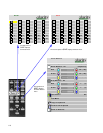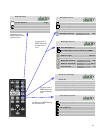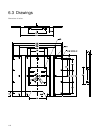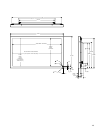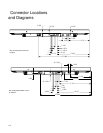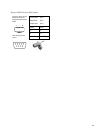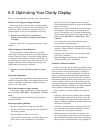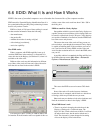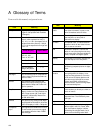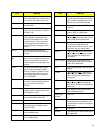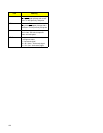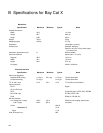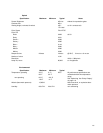
118
6.6 EDID: What It Is and How It Works
EDID is the name of a method computers use to determine the characteristics of the computer monitor.
EDID stands for Extended Display Identification Data. It is
the system behind Plug and Play. But just knowing its name
doesn’t tell you how it works.
EDID is a block of 128 bytes of data residing in a moni-
tor that contains information about the following:
• the manufacturer,
• the product ID,
• whether the monitor is analog or digital,
• video timings [resolutions],
• and color capability.
How EDID works
When a computer with EDID capability boots up, it
reads the EDID data in the monitor it is connected to. It
stores this data in the Registry (in Windows™) where it is
available to the video card.
Different video cards use this information in different
ways. Many video cards will not send video with resolu-
tions that are not listed in the monitor’s EDID.
This dialog box shows a setting of 1366
X 768 for the
3rd monitor. If the #3 monitor were not capable of this res-
olution, some video cards would not show 1366 x 768 in
the dialog box.
EDID too small for Clarity displays
One problem with this system is that Clarity displays are
capable of many more resolutions (video timings) than can
be stored in a data block of only 128 bytes. Clarity displays
are capable of hundreds of resolutions, but the EDID block
has room to store only dozens.
This means that some video cards will not put out cer-
tain resolutions, even though the connected Clarity display
is capable of handling them. If the resolution you want to
use is not listed in the Clarity EDID, and the video card
won’t list that resolution unless it is seen in the EDID, what
can you do?
A possible solution is to uncheck the Plug and Play box
in the Miscellaneous menu (Main Menu > Advanced
Options > Miscellaneous Options).
This causes the EDID to use an incorrect CRC check-
sum.
Some video cards will see the incorrect checksum,
assume the data is corrupted, and fall back on a default set
of timings, which may include the one you want.
Other cards may not bother to look at the checksum and
limit the resolutions to those in the display’s EDID.
When EDID doesn’t work
• There is no point in changing the refresh rate in the
Display > Settings tab > Advanced menu. The
Bay Cat X has a fixed refresh rate of 60 Hz. It will han-
dle other refresh rates, but the native refresh rate is
fixed. The electronics system changes the incoming
video to the display’s fixed refresh rate.
Miscellaneous
Curtain Pattern Logo
Plug and Play (EDID Enable)
Preferred Source Detection 16 x 9
HD Interlaced Content Motion Normal



